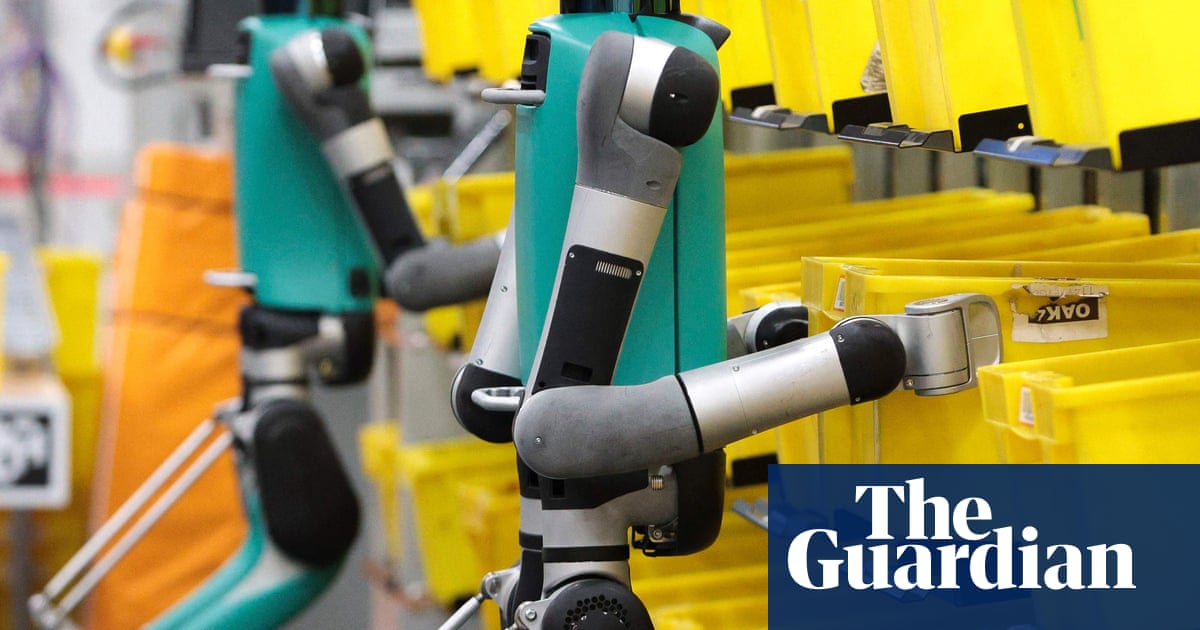Amazon is reportedly developing software for humanoid robots that could perform the role of delivery workers and “spring out” of its vans.
The $2tn (£1.47tn) technology company is building a “humanoid park” in the US to test the robots, said the tech news site the Information, citing a person who had been involved in the project.
TheInformation reportedthat the robots could eventually take the jobs of delivery workers. It is developing the artificial intelligence software that would power the robots but will use hardware developed by other companies.
The indoor obstacle course being used for the tests at an Amazon office in San Francisco is about the size of a coffee shop, the report said, with the company hoping the robots will be able to travel in Amazon’sRivian vansand make deliveries from them.
Even with a human driver behind the wheel, a robot could theoretically speed up drop-off times by visiting one address while the human employee delivers to another. Amazon also has an interest in self-driving vehicles through its Zoox unit.
Amazon has more than 20,000 Rivians in the US and has placed one of the vans in the humanoid testing zone, according to the report. Once it has tested the robots in the humanoid park, it plans to take them on “field trips” in the real world where they will attempt to deliver packages to homes.
Amazon has already conducted trials with humanoid robots, deploying devices developed by the US company Agility Robotics in its warehouses. The chief executive of Agility, Peggy Johnson,told the Guardian last yearthat the company’s Digit robot allowed employees to hand off work to humanoids and become a “robot manager”.
Last year Amazon was given permission to test-fly drones beyond a human controller’s line of sight in the UK,paving the way for using the technology in home delivery.
Prof Subramanian Ramamoorthy, the chair of robot learning and autonomy at the University of Edinburgh, said Amazon had a respected robotics team and its reported focus on “last mile” delivery was not a surprise. The humanoid robot hardware capable of carrying out such a task is becoming available and the field is developing rapidly, he said. However, he added, the challenge was to achieve reliable performance outside highly constrained environments such as the reported “humanoid park”.
Sign up toBusiness Today
Get set for the working day – we'll point you to all the business news and analysis you need every morning
after newsletter promotion
He said: “If Amazon restricts the scope, which means using relatively clear driveways and standard layouts of doors and surroundings, then the task would be quite a bit simpler. As the environments become more complex and variable, and others enter the picture – such as pets and small children – the problems become harder.”
Amazon has been contacted for comment.
